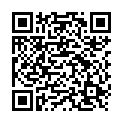|
|
|
| Module code: KI643 |
|
2V (2 hours per week) |
|
3 |
| Semester: 6 |
| Mandatory course: no |
Language of instruction:
German |
Assessment:
Oral examination
[updated 20.03.2007]
|
KI643 Computer Science and Communication Systems, Bachelor, ASPO 01.10.2014
, semester 6, optional course, technical
KIB-DIGF Computer Science and Communication Systems, Bachelor, ASPO 01.10.2021
, semester 6, optional course, technical
KIB-DIGF Computer Science and Communication Systems, Bachelor, ASPO 01.10.2022
, semester 6, optional course, technical
PIB-DIGF Applied Informatics, Bachelor, ASPO 01.10.2022
, semester 4, optional course, informatics specific
PIB-DIGF Applied Informatics, Bachelor, SO 01.10.2026
, semester 4, optional course, informatics specific
|
30 class hours (= 22.5 clock hours) over a 15-week period.
The total student study time is 90 hours (equivalent to 3 ECTS credits).
There are therefore 67.5 hours available for class preparation and follow-up work and exam preparation.
|
Recommended prerequisites (modules):
None.
|
Recommended as prerequisite for:
|
Module coordinator:
Prof. Dr. Martin Buchholz |
Lecturer:
Prof. Dr. Martin Buchholz
[updated 01.04.2003]
|
Learning outcomes:
After successful completion of this module, students will be able to classify and describe the basics of studio technology, source coding (audio and video coding) and channel coding (error protection), as well as the necessary transmission technology and its technical implementation. This will enable them to apply the most important methods of video coding (MPEG-4, H. 264) and transmission standards in their fields of application and assess them with regard to efficiency, complexity and their interactions in the subsystems.
[updated 26.02.2018]
|
Module content:
1. Overview and introduction
History of television, basics of analog television technology,
Transition to digital television
2. Recording technology and digitalization of audio and video signals
3. Redundancy and irrelevance reduction (source coding)
Data reduction, Huffman code, DCT,
Video and audio encoding, MPEG-2, MPEG-4, DivX
4. Error protection methods (channel coding)
5. Digital television signal transmission
Transmission via different transmission media:
Cable, satellite, terrestrial
6. Mobile TV broadcasting and technological convergence
Doppler shift, multipath propagation, diversity reception
New digital video services, technological convergence, IP datacasting
[updated 26.02.2018]
|
Recommended or required reading:
Reimers, U., Digitale Fernsehtechnik
Strutz/Mildenberger, Bilddatenkompression
Bossert, Kanalcodierung
[updated 26.02.2018]
|
Module offered in:
WS 2019/20,
WS 2018/19,
WS 2017/18,
WS 2016/17,
WS 2015/16,
...
|


